(1214 products available)


























































































































































































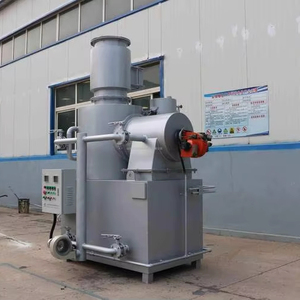

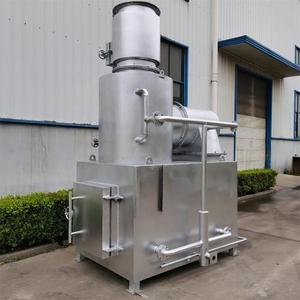
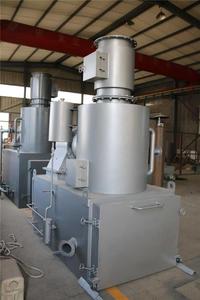

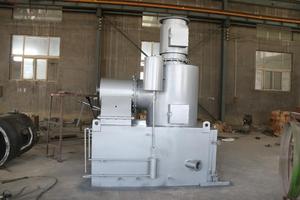







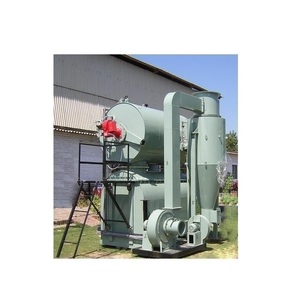

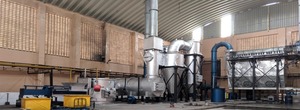
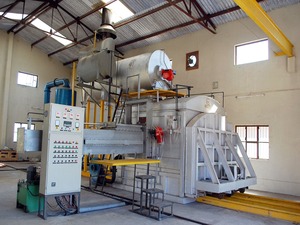





















A small industrial waste incinerator burns waste in controlled air pollution and combustion environments. The types of small industrial waste incinerators include:
Small waste incinerator, such as the 50 kg hospital waste incinerator, has some distinct features to look out for.
Dimension:
Usually, the small industrial waste incinerator will be less than 2 m in height and width.
Heat Yield:
It is based on the size and capacity of the incinerator. For a 50 kg incinerator, the heat yield is between 30 and 50 kw.
Fuel Source:
Most small industrial waste incinerators use diesel or kerosene. However, some may have a dual burn option; they can burn medical waste and fuel simultaneously.
Operating Temperature:
Every small incinerator has a specific operating temperature. It will be between 800 and 1,200 degrees Celsius. Some metal ones can even go up to 1,500 degrees Celsius or higher.
Charging Mechanism:
Small waste incinerators have top loading or front loading. Top-loading means putting the waste from the top, and front-loading means putting it in from the front like a furnace.
Emission Control:
Small waste incinerators may have different ways to control emissions. Some of them have filters or scrubbers to stop harmful gasses and particles from going into the air.
General maintenance of small industrial incinerators:
Small waste incinerators are easy to maintain. Following a planned and routine procedure helps them stay functional for many years.
Industrial incinerators are used in various industries for waste disposal to provide a hygienic and environmentally friendly option for industrial waste management.
Industries such as hospitals, healthcare centers, diagnostic laboratories, blood banks, nursing homes, and veterinary centers produce biomedical waste, including infectious sharps, body parts, contaminated materials, and chemical and pharmaceutical wastes. These industries utilize small incinerators to manage their biomedical waste safely and in compliance with regulations.
Hazardous and toxic industrial wastes such as those produced by the manufacturing, automotive, chemical, and pharmaceutical industries, may include contaminated machinery or industrial chemicals. Small industrial incinerators can help control these wastes geographically and safely.
Laboratories conducting research in various fields such as biology, chemistry, or pharmaceuticals may generate laboratory waste, including contaminated materials, chemicals, or biological samples that an industrial-scale incinerator can safely eliminate.
Small-scale industrial incinerators that burn only waste oil are often used by industries that use a lot of oils, such as the automotive and motorcycle industries. These oil waste burn incinerators are specially made to burn waste engine oil, gear oil, and hydraulic oil.
Small industrial waste incinerators can be used at remote sites where other waste disposal methods are impractical, such as in off-grid locations, construction sites, mining camps, military bases, agro-based industries, or emergency response situations.
Several factors should be considered when selecting an industrial incinerator for waste disposal. Key among them are the type of waste to be disposed of and how much of it will be disposed of per day.
Industrial waste comes in different forms. Some materials are made of organic matter, while others are made of metallic and plastic components. Energy content varies from one waste matter to the other. For instance, chemical or medical waste typically has a high calorific value compared to typical municipal waste. Some may also need additional treatment before being incinerated, for example, hazardous waste like heavy metals. Thus, businesses must carefully consider the waste type before selecting an incinerator that can accommodate such a waste material.
The amount of waste that an incinerator can handle per day will also affect its design and features. Businesses that typically only handle small quantities of industrial waste may be better off with an on-site waste disposal facility rather than an off-site one. Choosing a small industrial waste disposal facility located on-site would help minimize costs. Off-site facilities require more time and increased transportation costs (both time and fees).
Availability of resources to operate the facility is critical. Industrial waste incinerators typically use energy derived from electrical power, natural gas, or diesel fuel. Facilities relying heavily on electrical power may be better off selecting an incinerator that runs on electrical power rather than other forms of energy. Otherwise, they may incur high costs associated with adapting to a particular type of energy source.
Regulatory compliance is important regardless of waste type. Different communities have differing rules governing waste disposal practices. Some communities strictly refrain from incineration practices due to air pollution concerns. In such communities, choosing an incinerator would not be a priority but rather considering alternative waste disposal practices to comply with local regulations.
Businesses typically consider the operating and maintenance costs of waste disposal facilities. This includes the initial cost of installing a facility and any subsequent costs associated with maintaining it. Off-site waste disposal facilities are typically more affordable than industrial small-scale ones because the cost of service is usually spread across many businesses. On the other hand, the convenience of having the facility nearby may warrant some additional costs in terms of maintenance and installation charges.
Q1: How big are small-scale incinerators?
A1: Typically, a small incinerator will have a size that is comparable to that of a shipping container.
Q2: Is there a threat to environmental safety from small incinerators?
A2: The air pollution brought on by incinerators is a global crisis. Waste incinerators are known to release toxic substances into the air, like dioxins and furans. Moreover, they produce a considerable amount of carbon dioxide, which is a major greenhouse gas responsible for climate change.
Q3: What kind of waste can be burned in small industrial incinerators?
A3: Small industrial incinerators are typically designed to process specific types of waste. Common wastes include pathological waste, chemicals, sharps, and pharmaceutical waste, to name a few.